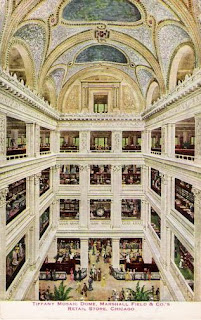After World War II, the diet of Americans began to change. Fast food started becoming very popular. There are many factors that effected the growth of the fast food industry and there are many factors that fast food has changed America. Steve Mintz wrote the following in the article “Food in America”: “Since WWII, and especially since 1970s, shifts in eating patterns have greatly accelerated. WWII played a key role in making the American diet more cosmopolitan.”
According to The American Forum for Global Education, there are four main factors that contributed to the growth of the fast food industry. These four are the automobile, development of the highway and suburbs and the “baby boom”. In the late 1940s and early 1950s many middle class families were able to purchase cars because of the American economy After World War II there was a huge birth rate increase known as the “ baby boom”. This caused middle class families to buy homes. Also after World War II,the expansion of suburban areas started to increase. This expansion was made possible by the development of the highway in the 1950s. The highway was so important because it’s what made it possible for people to live in the suburbs but work somewhere else.
You are probably wondering how all of that has to do with fast food, just like I was. But i learned from The American Forum for Global Education, there needed to be food for the people who lived in the suburbs, so fast food restaurants became popular. In the beginning fast food restaurants were designed for car owners who lived in the suburbs.The American Forum for Global Education also says that fast food is a sign of our culture because we take pride in “speed and efficiency”. This speediness brings us back to the car industry.
 |
| Henry Ford's Assembly Line |
Autumn Libal, the author of Fats,Sugars, and Empty Calories, says that fast food all started with the assembly line. Henry Ford created the assembly to make his cars cheaper and affordable.By doing this the assembly line broke down each task to a different person. This meant that each person would only have one job that they would do. Because each person would only be assigned a simply task, they no longer needed skilled and professional workers. The whole reason behind the assembly line was to make the process efficient.
 |
| First McDonalds |
On the McDonald’s website I learned that a young man named Ray Croc had the idea of opening McDonald’s all over the US. McDonalds is what started chain restaurants. Eric Schlosser says that, the reasoning behind fast food is how our retail economy works today, shutting down small businesses and opening up the exact same stores but in different places. Now a day’s most everything is chained.
 |
| Fast Food Nation |
 |
| Low wages are still a problem today |
SOURCES:
Digital History- "Food in America"
The American Forum for Global Education
McDonald's
Marketplace Big Book- Pandora's Lunchbox
Fast Food Nation by Eric Scholsser
Fats, Sugars, and Empty Calories: The Fast Food Habit by Autumn Libal











.jpg)